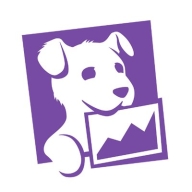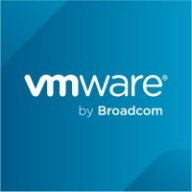

Datadog and VMware Aria Automation are both competitors in the monitoring and automation category. Datadog seems to have an edge with its extensive integrations and user-friendly setup.
Features: Datadog integrates seamlessly with numerous services, offers comprehensive monitoring capabilities, and provides easy setup and usability for non-developers. It also features sharable dashboards and a broad ecosystem. VMware Aria Automation allows for the creation of customized blueprints and tenant deployments, integrating effectively with VMware’s suite for robust automation.
Room for Improvement: Datadog's areas for improvement include reducing pricing complexity, enhancing metric controls, and improving security tool integration. Users would benefit from more flexible dashboards and better alerts management. VMware Aria Automation needs better public cloud integration, streamlined licensing, and simplified deployment processes. More comprehensive documentation would be advantageous.
Ease of Deployment and Customer Service: Datadog supports diverse deployment models, including public, private, and hybrid cloud environments, and generally offers helpful customer service. However, some users report inconsistencies in support experiences. VMware Aria Automation focuses primarily on on-premises setups, often requiring specialized expertise, with quality support praised despite occasional slow responses.
Pricing and ROI: Datadog offers competitive pricing in the monitoring space, though users find the pricing structure complex, leading to concerns about unexpected costs. Its feature-rich platform supports significant ROI. VMware Aria Automation is considered costly but offers good value for users integrated with VMware’s ecosystem, especially due to its comprehensive automation offerings, requiring close attention to licensing and operational expenses.
We never had major issues to report or request support.
In future updates, I would like to see AI features included in Datadog for monitoring AI spend and usage to make the product more versatile and appealing for the customer.
The documentation is adequate, but team members coming into a project could benefit from more guided, interactive tutorials, ideally leveraging real-world data.
There should be a clearer view of the expenses.
It operates for both of my products, however, as a product, it is complicated to integrate and automate with other products.
The setup cost for Datadog is more than $100.
Our architecture is written in several languages, and one area where Datadog particularly shines is in providing first-class support for a multitude of programming languages.
The technology itself is generally very useful.
It helps us automate the workflow of creating many VMs and the TensorFlow key method.
We have strong regulations for maintaining compliance and mitigating risks with this product.
| Product | Market Share (%) |
|---|---|
| Datadog | 1.9% |
| VMware Aria Automation | 0.3% |
| Other | 97.8% |


| Company Size | Count |
|---|---|
| Small Business | 78 |
| Midsize Enterprise | 42 |
| Large Enterprise | 82 |
| Company Size | Count |
|---|---|
| Small Business | 32 |
| Midsize Enterprise | 24 |
| Large Enterprise | 130 |
Datadog integrates extensive monitoring solutions with features like customizable dashboards and real-time alerting, supporting efficient system management. Its seamless integration capabilities with tools like AWS and Slack make it a critical part of cloud infrastructure monitoring.
Datadog offers centralized logging and monitoring, making troubleshooting fast and efficient. It facilitates performance tracking in cloud environments such as AWS and Azure, utilizing tools like EC2 and APM for service management. Custom metrics and alerts improve the ability to respond to issues swiftly, while real-time tools enhance system responsiveness. However, users express the need for improved query performance, a more intuitive UI, and increased integration capabilities. Concerns about the pricing model's complexity have led to calls for greater transparency and control, and additional advanced customization options are sought. Datadog's implementation requires attention to these aspects, with enhanced documentation and onboarding recommended to reduce the learning curve.
What are Datadog's Key Features?In industries like finance and technology, Datadog is implemented for its monitoring capabilities across cloud architectures. Its ability to aggregate logs and provide a unified view enhances reliability in environments demanding high performance. By leveraging real-time insights and integration with platforms like AWS and Azure, organizations in these sectors efficiently manage their cloud infrastructures, ensuring optimal performance and proactive issue resolution.
VMware Aria Automation is a cloud management tool that allows companies to simplify their cloud experience through a modern automation platform. The solution is designed to deliver self-service clouds, multi-cloud automation with governance, and DevOps-based security and infrastructure management. It helps organizations improve IT agility, efficiency, and productivity through its various features.
VMware Aria Automation has multiple use cases that include the following:
VMware Aria Automation Features
VMware Aria Automation has various features that allow users to easily perform operations. Some of the solution's capacities include:
VMware Aria Automation Benefits
VMware Aria Automation offers its users various benefits. Some of the biggest advantages that the solution brings to companies that utilize it include:
Reviews from Real Users
Awais J., CTO/CEO at a tech services company, likes VMware Aria Automation because it saves a lot of time, provides more visibility, and has extensive automation capabilities.
An IT consultant at a government rates VMware Aria Automation highly because the product gives you flexibility to analyze and consume resources.
We monitor all Cloud Security Posture Management (CSPM) reviews to prevent fraudulent reviews and keep review quality high. We do not post reviews by company employees or direct competitors. We validate each review for authenticity via cross-reference with LinkedIn, and personal follow-up with the reviewer when necessary.